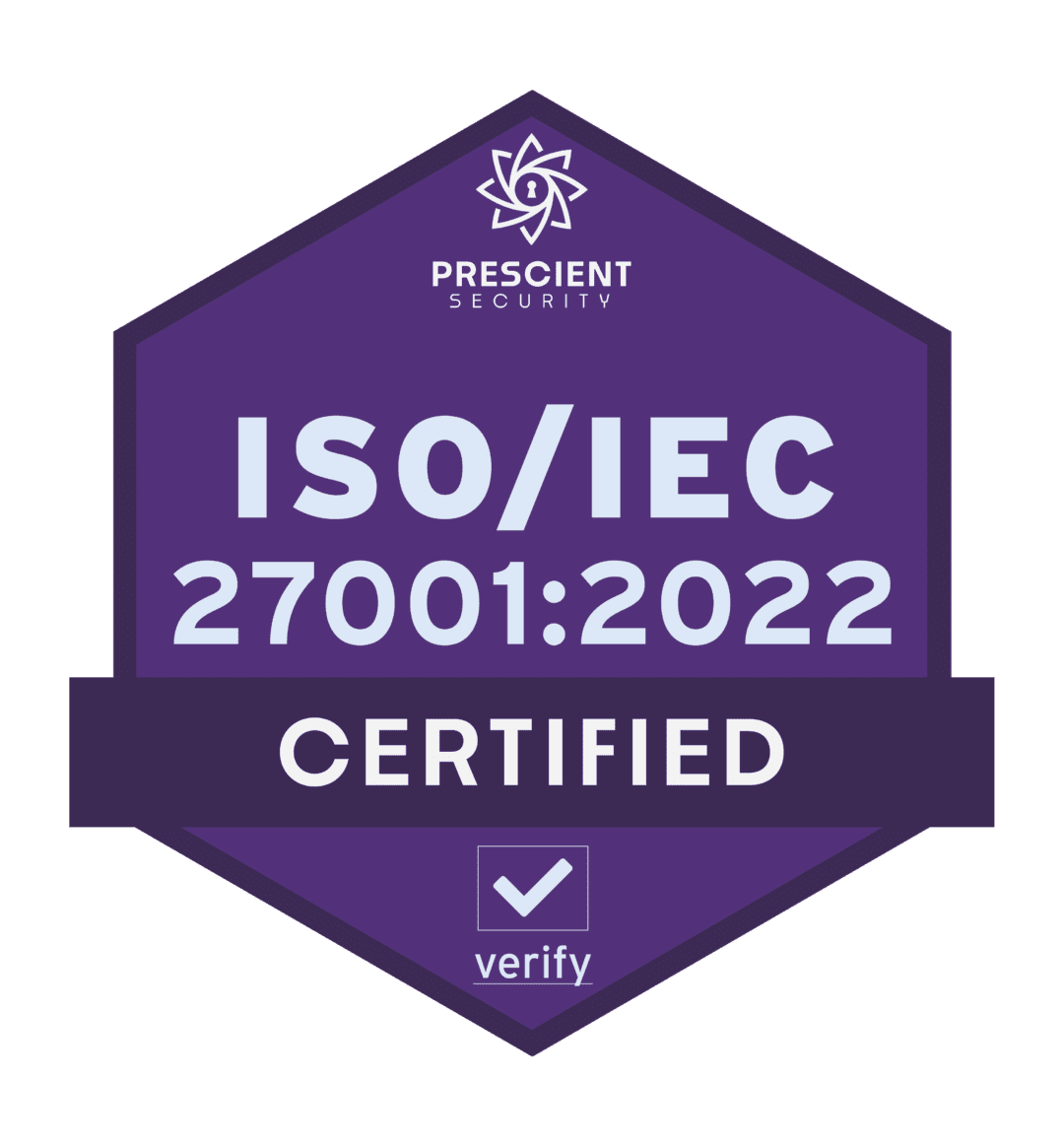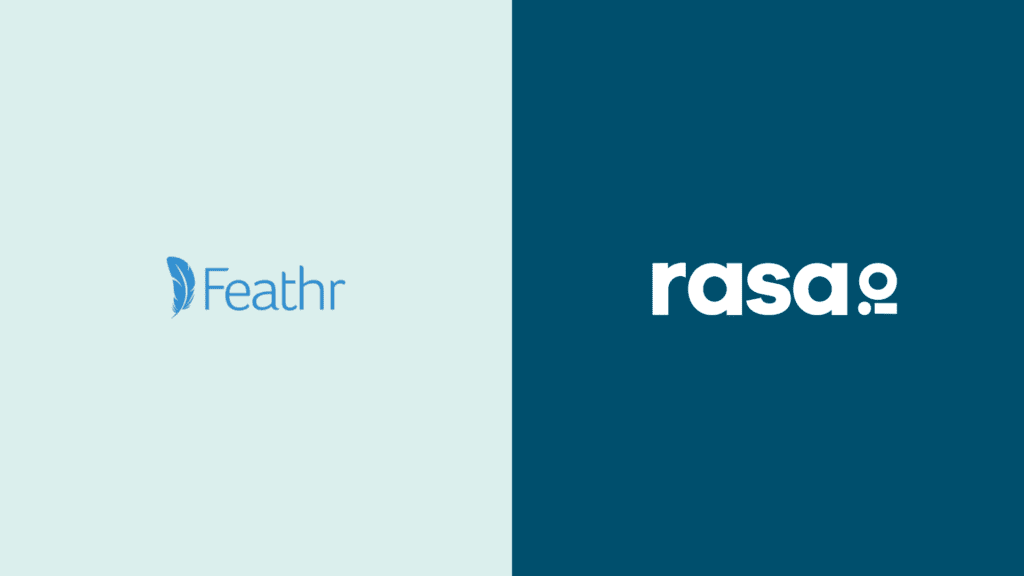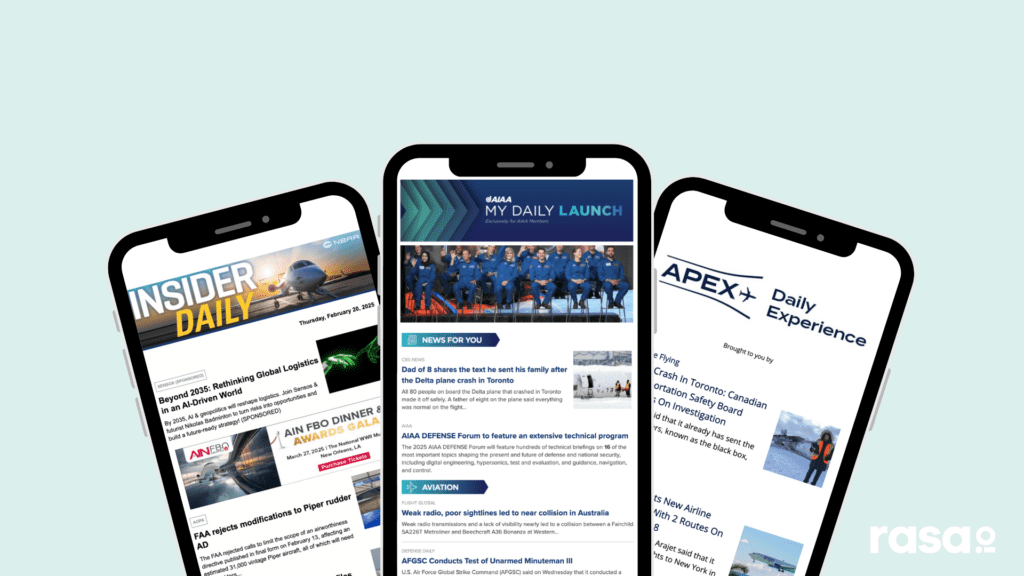Richard Lindner
How the co-founder of an industry-leading digital marketing education company thinks about email and how to shift focus and build an editorial-style email newsletter. He shares how sending an internal newsletter can help an organization with the alignment of their company goals and the team that is leading them.
Richard Lindner has been the president of Digital Marketer since 2008 and he’s created numerous email campaigns, yielding remarkable open and click rates. But what’s worked in the past, doesn’t always work in the present. Richard explains his thoughts about email and what caused Digital Marketer to shift focus and build an editorial-style email newsletter, which was different from what they’d been doing for many years. He also shares how sending an internal newsletter can help an organization with the alignment of their company goals and the team that is charged with leading them.
Key Points From This Episode:
- Email expedites every stage of the customer value journey and is the way that we continue to add value to prospects who may not be a customer.
- How you build the list and how you talk to the list and how you get them to be there when you’re not talking to them and remember you and buy stuff from you.
- Four questions to include in every email that you write:
- Why now?
- Who cares?
- Why should they care?
- How can you prove it?
- Increase engagement by adding value. Not everything you send has to ask for something.
- Internal marketing is important because a team needs to understand how it ties back to the mission, the vision, the values, and the purpose.
- Writing a weekly internal newsletter, making sure that people understood just that – What is going on right now in the company? What are we thinking about? What are the big decisions? What’s important? What are we researching and reading right now?
- Companies need to know when there is a need when there is a segment of your internal database that needs to be nurtured.
Tweetables:
“What is going on in your ideal customer, in your subscriber’s head right now that makes the message that you have, or the thing that you’re interrupting them to tell them important?” — @RichardLindner
“My whole mission in email is to keep email conversational. To write it to where if I read it out loud, it wouldn’t be an awkward conversation between two humans.” — @RichardLindner
“Marketing at its core is just the articulation of the transformation from the before state to the after state.” —@RichardLindner
“Today I think the odd part is, most employees know more about a lot of things, probably more than ever before about what is going on in the company, but less about what’s important and what the focus is and how that ties back to what they do.” – @RichardLindner
Links Mentioned in Today’s Episode:
Episode Transcript
Richard:
For us email expedites, every stage of the customer value journey. Email is the way that we continue to add value to prospects who may not be customer. Email is the way that we distribute announcements about updates and new releases for people who are customers and premium subscribers. It is the way that we keep our team and our company informed of what’s going on. It’s the way that we extend the lifetime value by selling additional items to customers, or just keeping them for members longer. Email is the way that we connect. Without email, I don’t know that we’d be in business. We’d probably figure it out. But if email went away tomorrow, it would be tragic
Bryan:
From rasa.io, the free tool for sending smarter and better email newsletters. This is Pushing Send, a show featuring people who send emails their subscribers actually want to read. I’m Bryan Kelly and on this special bonus episode, how the co-founder of an industry-leading digital marketing education company thinks about email. Here’s Richard Lindner from digitalmarketer.com. What’s your earliest experience with email and understanding the impact it can have on a business?
Richard:
Well, when I first kind of started working online ,back I guess, in the good old days, like email and even PPC, it was amazing like PPC, you could just launch a campaign and no quality scores, no anything just targeting by traffic to pretty much any site and that was easy. And in the same, in the same vein email, people were still excited to get it. So , as long as you had an email list and you had built that list, I mean, you could send out an offer. And I remember kind of one of my first mentors and business partners, Perry Belcher. When I came into his first company, we had some, some big plans that weekend. I don’t know if we were going to the lake or something and he said, “hold on. I want to load up this email campaign”. And I was like, oh, okay, great. What are you going to do? And he’s like, well, I’m gonna write these three emails. I’m gonna schedule them out to this one list. And you know, it should be good for 150, maybe 200,000 in revenue this weekend. I was like, okay, right. Well, I’m gonna go over here and jump in my DeLorean and go do it. It was just, it was such a casual statement and that I just didn’t understand at the time, because all of my business experience and entrepreneurial experience had been more brick and mortar. So, just this concept of having a giant database of people that were just sitting there waiting, I think he wrote this particular email campaign and it was timely and targeted. And obviously for coffee. I think it ended up doing something like $350,000 that weekend while we were at the lake. From then on, it was like, okay, email is a thing. Like I really need to understand email and how you build the list and how you talk to the list and how you get them to be there when you’re not talking to them and remember you and buy stuff from you. And that’s been kind of the decade plus long love affair with email.
Bryan:
Now you mentioned a content first focus at DigitalMarketer, but how do you approach writing an email compared to somebody like a trained journalist?
Richard:
I think it’s a great distinction. The journalistic approach is one way. I kind of go through four questions that I make sure that I answer in every email that I write. Question number one, why now? We have to first acknowledge that email is interruptive. It’s not like search someone logs on to Google and searched and your email appears we are interrupting something even if it’s a time that our subscriber has set aside to check their inbox. It’s probably a side at that time they have set aside to purge their inbox, but that’s a whole nother story. If we don’t first and foremost, answer the question, like, why am I interrupting you right now with something that’s important to me? So is it new? Is it on sale? Is it limited or exclusive? Is it timely? Is there some threat or opportunity that, that you need to be aware of and take advantage of or watch out for right now This is where most people get kind of tripped up. They don’t really answer the question or just kind of breeze over. People don’t tie back what they’re offering or what they’re talking about to anything relevant in, in the climate. Like what is going on in your ideal customer, in your subscriber’s head right now that makes the message that you have, or the thing that you’re interrupting them to tell them important? If you had to walk up and tap that person on the shoulder and they turned around, what would you tell them? We open up Microsoft Word or a text editor and we become somewhat robotic. My whole mission in email is to keep email conversational. To write it to where if I read it out loud, it wouldn’t be an awkward conversation between two humans. So answering that first question is why now? And then the second question is who cares? We have this bias, based on our understanding of our product line or our service or our content or the thing that we’re an expert in, or the value that we add. And we pull that bias through. And we typically skipped steps. Frankly, we think far too highly of ourselves. We’re just not that important in the day to day lives of our customers. Definitely not of our prospects or subscribers. Like I don’t think anyone’s ever called into support here at DigitalMarketer or any of our other companies and said, “Hey, I’m about to go home for the day. And I realized I didn’t get an email from you. Is everything okay?” Like they don’t know, they don’t notice. So if we don’t go back and remember to connect those dots, like why now, and who cares, who would be affected the most positively or negatively by having or not having what you’re selling or what you’re talking about, the information that is provided in that email. So answering that question, I mean the email kind of starts to write itself, like why now, who cares? And then questions number three for me is why should they care? Why should they care if we’ve said, here’s this thing that’s going on right now, here’s why you should, here’s who it affects. Here’s why you should care. And really that goes back to almost a before and after, right? A future casting a little bit. So painting the picture of what someone’s average day or life would look like before or after the acquisition of this product, service or information marketing at its core is just the articulation of the transformation from the before state to the after state, right? The before state, what is your customer or prospects day to day life like before they meet you, the after state, after they know you and have your product or service. And if you can clearly articulate that transformation, congratulations… Marketing. So, how do we bring that in a short segment, copy chunk in an email? It’s actually not that hard, but most people aren’t answering all of these questions. You know, a good email, maybe answers two of them or three of them. But when you make sure they’re all there, then you’ve given a complete and persuasive point on why someone should allow that interruption of their time. So, the final question is just, how can you prove it? If we say, why now? Who cares? Why should they care? The final thing is how can you prove it? And then you think about these in almost copy chunks, because when you think of the structure of an email, one of the mistakes that I see a lot of people making in emails and, especially promotional emails, buyer intent, emails, commerce based emails is they almost follow like a, how bout now linking structure. They’re just restating the same thing and then adding another link. You want to click this link? No. How about now? How about now? How about now? For me, when I’m looking at emails, every section needs to be different. I need to queue the click a little bit differently when you open the email and I can clearly state, like, this is why this is important and I can put a link because some people are going to go, Holy crap, that is important. And they’re going to click. If they didn’t click, they’re doing one of two things. They’re either no longer reading or they’re scrolling. If they’re no longer reading, they truly don’t care. If they’re reading they care, but I haven’t given them enough information to click yet. So the next section needs to give them more information. If each section gives them more information, does it just restate the previous point that I’m giving them a different reason to click at each link, at each button? And I think that’s the respectful thing to do. So answering these questions, make sure I can start to clearly define those sections, right? Why now? Who cares? Why should they care? How can you prove it? And you can do that with news stories, case studies testimonials, depending on a graph, some sort of image, something to give them more information if they’re still scrolling so that as they’re processing and saying, is this worth my time right now, you’re continuing to give them more information to prove that it is. So I just make sure that at the core, any email that I write or that I’m reviewing for our team answers those four questions. And if not, it gets, it gets sent back.
Bryan:
When we come back, Richard shares, how and why the team at DigitalMarketer made a shift to an editorial style email newsletter. Plus, he describes software they created in order to send weekly email newsletters to their entire internal team. I’m Bryan Kelly, and you’re listening to Pushing Send from rasa.io.
rasa.io:
Creating email newsletters takes a lot of time. You might curate articles, write content, tweak your template, and look up metrics. And not to mention, you’re probably doing all of this once a week. Well at rasa.io, we said enough and built a free tool to simplify the process, which saves you time. It also uses AI to personalize emails for each subscriber based on their interests. That means they get stuff they like to read. Want to see how it works? Visit www.rasa.io and click how it works.
Bryan:
Welcome back to Pushing Send. I’m Bryan Kelly. Richard Lindner has been the president of DigitalMarketer since 2008 and he’s created numerous email campaigns, yielding remarkable open and click rates. But what’s worked in the past, doesn’t always work in the present. Here’s Richard explaining what caused DigitalMarketer to shift focus and build an editorial-style email newsletter, which was different than what they’d been doing for many years.
Richard:
When we were looking at our email and looking at not only the promotional email copy and just the results we were getting in engagement and opens and clicks, and we spent something that’s fundamentally broken with our, our email and the drop dead simple realization that just figuratively slapped Ryan and I in the face was we had stopped delivering valuable content to the inbox of our subscribers. In fact, once a week, we’d mail a recap email and link over to some blog posts, but there was no valuable insights or information being delivered in their inbox for them to consume without a click. And we wondered why our engagement had gone down? We stopped adding value in the inbox. So, we decided that we were going to write an amazing email newsletter and deliver it right in the inbox and at least for the first 90 days there was going to be no clicking. And we watched the engagement of this go up and up and up and we watched it start to turn the tides of kind of the overall database engagement and seeing those go up. And we said, okay. Again, it’s kind of an embarrassing epiphany there was nothing in the inbox that wasn’t asking for something. Right, asking for money or the sale, or we just didn’t send anything to them of any value. And when we started doing it, who knew? They picked back up, they started listening again. So that was kind of that same time when we said, okay, we’re going to completely rethink our email and we took our best performing promotional day and said, this is now reserved for newsletters. So we’re going to send a newsletter out every Monday. And you know, what, if that means a promotion has to wait until Tuesday? I bet it’ll work out when we reengage the list. And sometimes we send two emails on Monday now, but we never miss the newsletter.
Bryan:
So going beyond what we typically think about an email newsletter, you guys launched a new software tool at the beginning of 2020 called recess.io. What is it and what’s the origin story?
Richard:
Yeah. So thinking kind of marketers first, because that’s what we are. We kind of were looking at our, you know, our team and saying like, wow, there’s a lot of stuff that I’m surprised that you don’t know. And I don’t mean that in a judgy way, you know, I don’t mean that like, ha you don’t know this I’m better than you. I mean, wow. I feel like we’ve communicated that clearly, but you don’t know it. And if I’m honest, still running a company of 50 or 60 employees in the same way that we did from a communications when we were 11 or 13, that doesn’t work The communication just broke down one or two layers below, you know, the founder, Ryan and I, and it was just amazing, the conflict that that caused because when the team doesn’t understand the why, or what’s important or what’s important right now, they don’t understand the decisions that are being made. They don’t understand how it ties back to the mission, the vision, the values, the purpose, they don’t understand how to tie their daily activity to what’s most important in the company. And all of that, just a way of saying there is zero way for you to have alignment in the company goals and the team that is charged with leading them. So, we kind of are going through and realizing this and saying, I think we have missed one of the most valuable segments in our entire company. And that is our, our team. I don’t think we market internally as effectively as we market externally. I don’t think our team knows what’s going on and that’s not their fault. It’s ours. And I can’t imagine being charged with doing a job when I don’t know why I’m doing it or what the most important thing is. And boy, when that washes over you, when you’ve built this team, and when you realize that that’s your fault, and you talked about professionalizing and changing with all the outward changes being made and being focused on, on systems and processes and SOP’s and not losing ourselves and serving kind of in the customer first to realize that we didn’t do any of that internally, or we didn’t make any of those changes. And people either really knew what was going on or were left to kind of come up and create their own story. Today I think the odd part is, most employees of most companies know more about a lot of things, probably more than ever before about what is going on in the company, but less about what’s important and what the focus is and how that ties back to what they do. And that is dangerous. That’s how you ruin good employees. That’s how resentment builds in. So kind of the origin story of recess.io is , we decided that if we were able to the increase engagement in an email list, that frankly was underperforming and kind of looked, I mean, more accurately described as dying. We had a team full of good people who cared and gave a damn and didn’t really know. So if a newsletter worked for hundreds of thousands of people, why wouldn’t it work internally? So we started writing a weekly internal newsletter, making sure that people understood just that – What is going on right now in the company? What are we thinking about? What are the big decisions? What’s important? What are we researching and reading right now? And when we began to just explain these things on a consistent weekly basis, we saw that people started to understand how decisions were being made and why decisions were being made. In the past, they just had to fill in the blank stone on that story themselves. But we were using the newsletter software software that was meant to send to subscribers. So it delivered a message, but it didn’t really tell us what we needed to know. Do we have an engaged team? Can we send a message out that is personal one-to-many that then turns into a one-to-one conversation. Can we start to measure engagement? Can we start to allow for that feedback to be quantified and then sent to the right person and then start to effect change? And the answer is no. So we decided to build recess.io And we look at it kind of like every business has a CRM to manage their, their database to manage their customer database. We want recess to be the internal CRM for your team, right. To manage engagement and enrichment, and to make sure that the awareness, right, and the alignment of your team is always on par with your goals and your mission.
Bryan:
I really, really liked that. And it’s fascinating you’ve taken your expertise in email marketing and applied it to team communication. Now, can you specifically talk about the difference between recess.io And a tool like MailChimp or AWeber? Like what’s, what’s the difference?
Richard:
MailChimp and AWeber are great. I’ve used both those, love both those platforms for external marketing, but for internal marketing, what we need to know is has someone read the email? And now, yes. Can you run reports and say, who’s read this email who hasn’t, who’s opened this email. So we started to build in features that we can mark an email as required reading. And it’ll not only tell us who’s read and who hasn’t, but it will also send reminders out to the people that haven’t and we have an engagement score. I mean, one of the most powerful things about recess is it starts to build an engagement score for your company. It has an engagement score that you can drill down from the overall company engagement, then drill down into side by side comparison of team engagements and all the way down to the individual engagement level. And the engagement levels are engaged, at risk ,unengaged. And if you have someone who is unengaged, they are moments away from being a detractor. And listen, I think there are plenty of high growth companies out there that have great products and care about their customers and care about their employees. But, but leadership and management are an afterthought because they are such high growth. I think that what recess will allow companies to do is know when there is a need. When leadership is reactionary, but not to that state of alarm to say, here’s a database, or here’s a segment of your internal database that needs to be nurtured, right? Here’s a segment of this database that is at risk. And we all know that there is a cost to, to recruiting and hiring and onboarding and training. And if you lose a good employee, what does that take to replace that person in time and dollars in opportunity costs? I know if when I looked back and I was really honest about it, I had ruined more good employees by focusing on the business and just completely ignoring kind of making sure that the people who powered the business were healthy, were informed, were engaged. So the main difference is recess is going to baseline engagement for your company. It’s going to tell you how engaged is your team, team by team. And it’s going to alert you when you need to dive in. We have out of the box templates that you can send. One of them is just a check-in template. It can be set to go out every week. It’s one of my favorite templates to send and it’s, it’s what I started doing internally to anyone reported to me is three questions. How are you feeling? What’s your stress level? What’s your workload? And that is five smiley faces. Terrible to excellent. And then there’s one final question. Do you need any additional resources support or help? Yes or no.?If someone clicks, yes. There’s a box that pops up that says, please explain. And they can type in anything, hit submit and the second that they hit submit, every manager in this company gets an email saying, “Hey, Bryan needs some help. Here’s what they need.” So I can be reactionary to the minute. I can also start to, to track engage, like, what is this person’s stress level or workload over the past five weeks a month, really start to look at managing an internal book of business. And that is the employee happiness engagement and moving over into effectiveness. Because if you have someone who’s not in the know, right, they don’t, they don’t know what’s going on you’re not effectively communicating what’s important to them. They’re overworked, they’re stressed. And they’re unhappy. There is no way that that person is going to drive results in their company.
Bryan:
Richard offers some very compelling reasons to leverage the format of an email newsletter, to communicate with prospects, customers, and even employees. So I’m curious, how have you best utilized email to build your business? Send us an email to hello@rasa.io. That’s rasa.io and we might feature you on an upcoming season of Pushing Send. If you’re listening to Pushing Send for the first time, be sure to subscribe at Apple Podcasts or wherever you’re listening. So you don’t miss an episode. And if you’ve enjoyed what you’ve heard, I’d encourage you to check out a few other episodes while you’re here. Lastly, leaving a review will help us share these stories with others like you. Thanks in advance for doing that. I’m Bryan Kelly, and you’ve been listening to Pushing Send from rasa.io.















